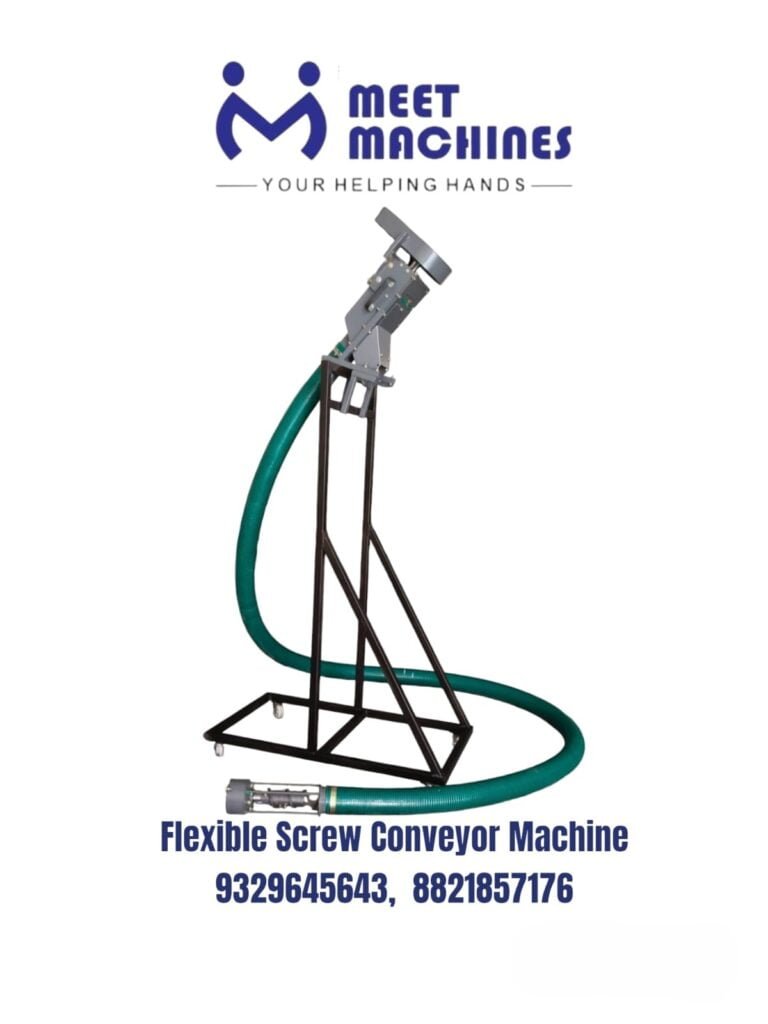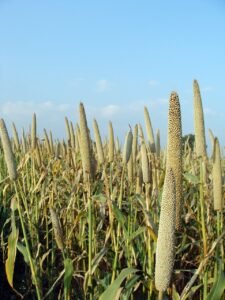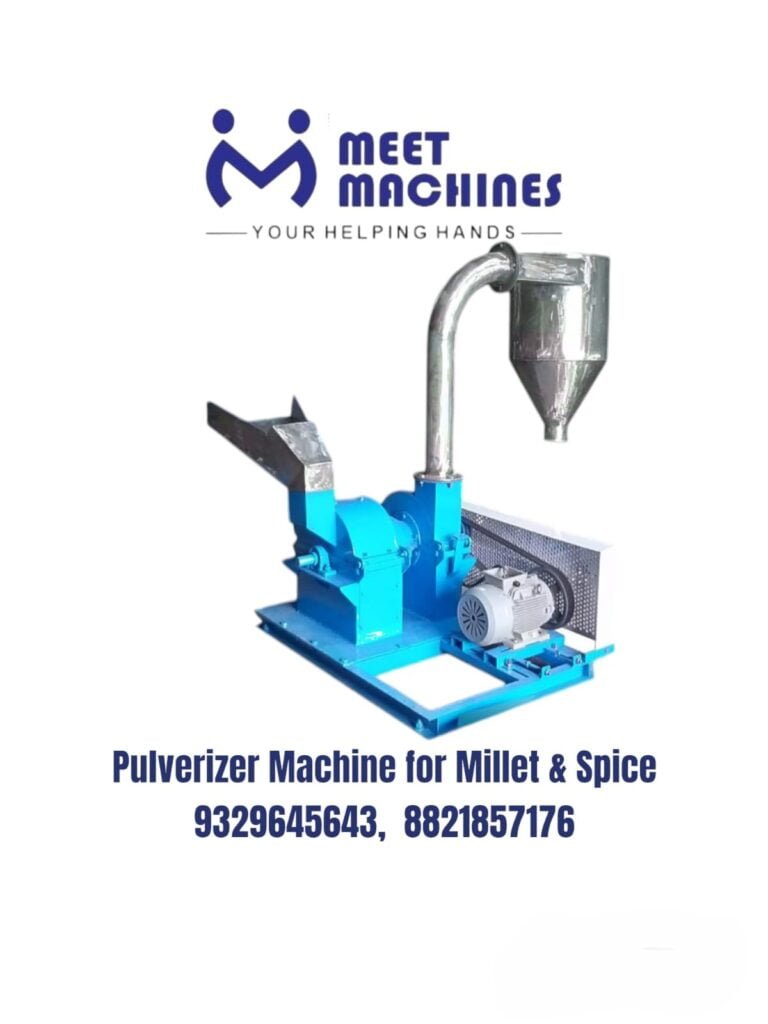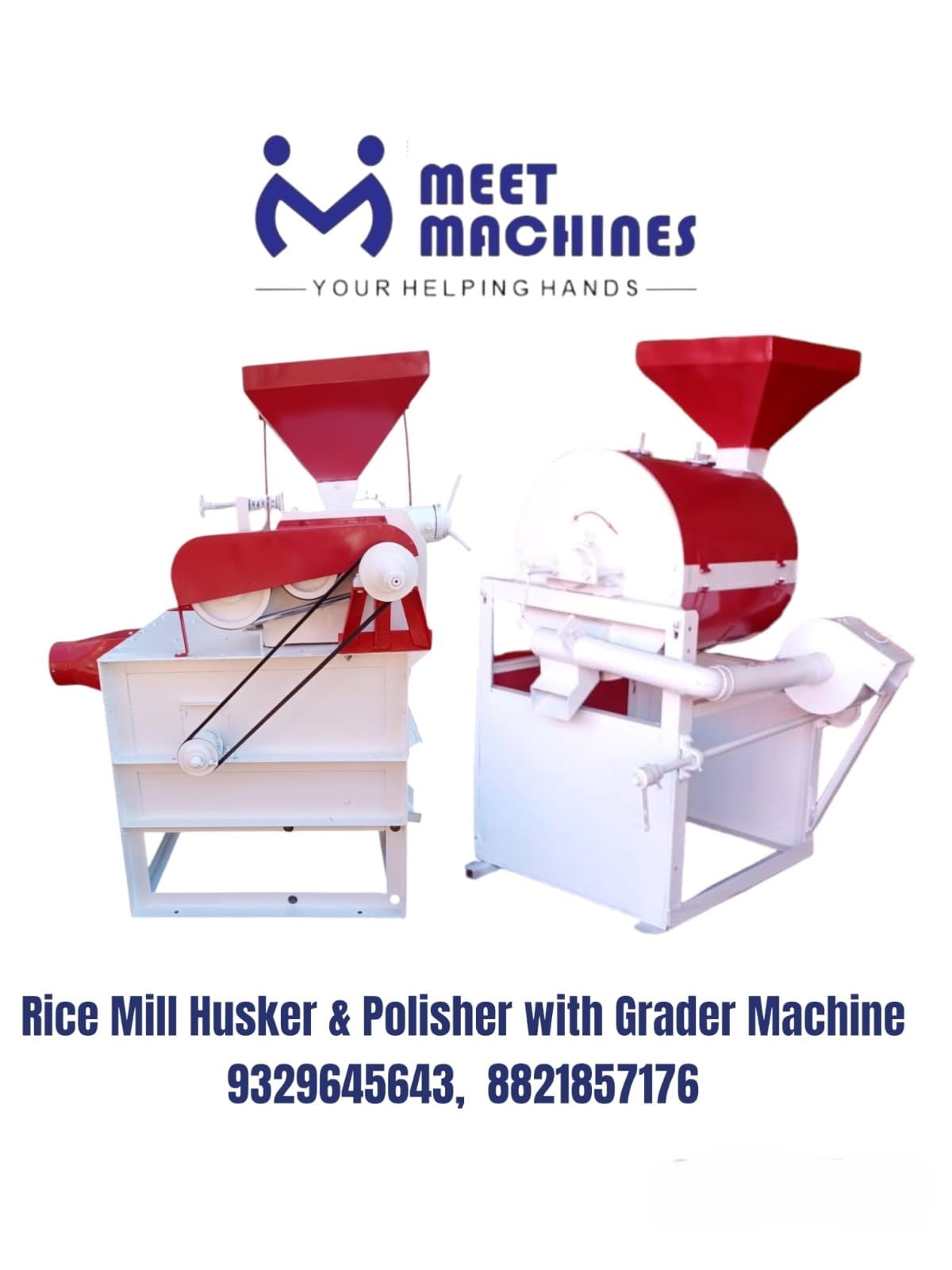
Rice Mill Machine or you can say Rice Mill Paddy Rubber Roll Husker with Emery Polisher and Grader Machine
Introduction
Rice is a staple food for a significant portion of the world’s population, and its processing is a critical component of the agricultural industry. The rice milling process involves several stages, including husking, polishing, and grading, each of which plays a vital role in producing high-quality rice. Among the various machines used in rice mills, the paddy rubber roll husker, emery polisher, and grader machine are some of the most important. This write-up provides an in-depth exploration of these machines, covering their significance, design principles, components, advantages, challenges, case studies, and future prospects.
Importance of Rice Mill Machines
- Quality Improvement: Proper milling improves the appearance, taste, and nutritional value of rice, making it more appealing to consumers.
- Efficiency: Advanced machines streamline the milling process, increasing output and reducing labor costs.
- Reduction of Waste: Efficient milling reduces breakage and wastage of grains, maximizing yield.
- Market Value: Well-milled rice commands a higher market price, benefiting farmers and millers.
- Food Security: Efficient milling contributes to food security by ensuring a steady supply of high-quality rice.
Design Principles of Rice Mill Machines
The design principles of rice milling machines focus on efficiency, quality, and ease of operation. Key principles include:
- Husking Efficiency: Ensuring maximum husk removal with minimal breakage of rice grains.
- Polishing Quality: Achieving a smooth and shiny finish on the rice grains without damaging them.
- Grading Accuracy: Accurately separating rice grains based on size and quality to ensure uniformity.
- Durability: Using robust materials and components to withstand continuous operation.
- Ease of Maintenance: Designing machines for easy cleaning, maintenance, and parts replacement.
Components of Rice Mill Machines
A rice mill typically consists of several interconnected machines, each with specific components:
- Paddy Rubber Roll Husker:
- Rubber Rolls: Two rubber rolls that rotate in opposite directions to dehusk the paddy.
- Husking Chamber: The space where husking occurs, designed to optimize contact between the paddy and rubber rolls.
- Husk Separator: A system that separates husks from the brown rice after husking.
- Feeding Mechanism: Controls the flow of paddy into the husker for consistent processing.
- Emery Polisher:
- Emery Roller: A cylindrical roller coated with emery, used to polish the rice grains.
- Polishing Chamber: The area where polishing takes place, ensuring even contact between the rice and the emery roller.
- Bran Extractor: Removes the bran generated during the polishing process.
- Air Blower: Provides airflow to help remove bran and dust from the polishing chamber.
- Grader Machine:
- Sieve System: A series of sieves with different mesh sizes to separate rice based on size and quality.
- Vibrating Mechanism: Ensures efficient movement and separation of rice on the sieves.
- Discharge Outlets: Separate outlets for different grades of rice.
- Feeding System: Controls the flow of rice into the grader to ensure consistent separation.
Working Principle of Rice Mill Machines
The paddy rubber roll husker operates based on the principle of differential speed and pressure. Paddy is fed into the husking chamber, where two rubber rolls rotating at different speeds create friction and shear forces that strip the husk from the rice grains. The husks are then separated from the brown rice using a husk separator, and the dehusked rice moves on to the next stage.
The emery polisher works by abrasion. The brown rice enters the polishing chamber, where it comes into contact with the emery roller. As the roller rotates, it rubs against the rice grains, removing the bran layer and polishing the surface. Air blowers assist in removing the bran and dust generated during polishing, ensuring a clean and smooth finish.
The grader machine functions on the principle of size separation. Rice grains are fed into the grader, where they pass through a series of vibrating sieves with progressively smaller mesh sizes. Larger grains remain on the top sieve, while smaller grains fall through to the lower sieves. The process continues until the rice is sorted into different grades based on size and quality, which are then discharged through separate outlets.
Advantages of Rice Mill Machines
- High Efficiency: Advanced machines process large quantities of rice quickly, increasing productivity.
- Consistent Quality: Automated processes ensure uniform quality and appearance of the rice.
- Reduced Labor: Automation reduces the need for manual labor, lowering labor costs.
- Minimized Breakage: Modern machines are designed to minimize grain breakage, increasing yield.
- Versatility: These machines can handle various types of rice and adjust to different processing requirements.
- Hygiene and Safety: Enclosed systems reduce contamination risks, ensuring hygienic processing.
Challenges and Considerations
- Initial Investment: The high cost of purchasing and installing advanced milling machines can be a barrier for small-scale millers.
- Maintenance: Regular maintenance is required to keep the machines running efficiently, involving additional costs and technical expertise.
- Energy Consumption: Milling machines require significant power, and energy efficiency is a critical consideration to reduce operational costs.
- Training: Operators need proper training to use and maintain the machines effectively.
- Environmental Impact: Proper disposal of by-products such as husk and bran is necessary to minimize environmental impact.
Technological Innovations in Rice Mill Machines
- Automation and Control Systems: Modern rice mills are equipped with automated control systems that optimize the milling process, reduce human error, and improve efficiency.
- Energy-Efficient Designs: Innovations in energy-efficient motors and systems reduce power consumption, lowering operational costs and environmental impact.
- Advanced Materials: The use of advanced materials for components such as rubber rolls and emery rollers increases durability and reduces maintenance needs.
- Integrated Systems: Combining multiple processes (husking, polishing, grading) into a single integrated system enhances efficiency and reduces space requirements.
- IoT and Data Analytics: Integration of IoT devices and data analytics for real-time monitoring and optimization of the milling process.
Future Prospects and Opportunities
- Sustainable Practices: Future developments will focus on sustainability, including energy-efficient designs and eco-friendly materials.
- Customization: Machines tailored to specific local needs and rice varieties will enhance efficiency and product quality.
- Government Support: Policies and initiatives promoting the modernization of rice milling can encourage the adoption of advanced technologies.
- Market Expansion: Growing demand for high-quality rice in emerging markets offers opportunities for expansion and investment.
- Research and Development: Continued investment in R&D will drive innovations, addressing current challenges and improving efficiency.
- Digital Integration: Integrating digital technologies such as IoT and AI can enhance monitoring, optimization, and predictive maintenance of milling systems.
Conclusion
The paddy rubber roll husker, emery polisher, and grader machine are integral components of modern rice milling operations. By automating and optimizing the milling process, these machines improve efficiency, product quality, and profitability. Despite challenges such as initial investment, maintenance, and energy consumption, the benefits of using advanced milling machines far outweigh the hurdles.
Technological innovations, sustainability, and customization are shaping the future of rice milling. With the right support from governments, research institutions, and industry, these machines can play a pivotal role in ensuring high-quality rice production, improving food security, and fostering economic development in regions where rice is a staple food. As demand for high-quality rice continues to grow globally, the importance of advanced rice milling machines will only increase, driving further advancements and opportunities in the sector.










